#afromontane
Text



Forest core. Friday, 30 April 2021.

#forest#forest core#nature#nature core#afromontane#indigenous#fungi#mushrooms#lichen#luminescent#plant life#forest floor#photography#nature photographer
0 notes
Text
Fires and unsustainable wood harvesting have depleted the Afromontane forests on Mount Moco, Angola’s highest mountain.
The forests are home to a diverse variety of birds, some found only in Angola.
Since 2010, a conservation project has sought to regrow some of the forest patches and to protect them from wildfires.
The work is promoting bird conservation, but also benefiting the local human community by ensuring a reliable flow of freshwater out of the forest.
Two photos of Kanjonde, taken 40 years apart: the large patch of forest seen above the village in 1973 had been reduced to a fraction of its original size by 2016.
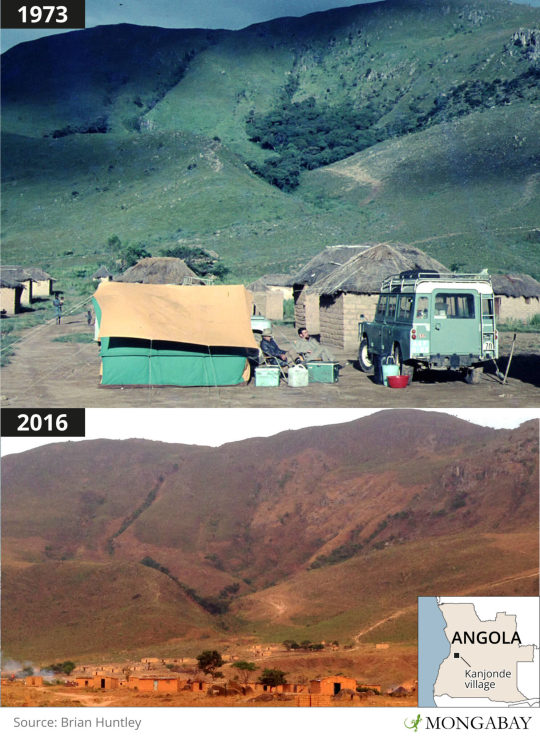
Now
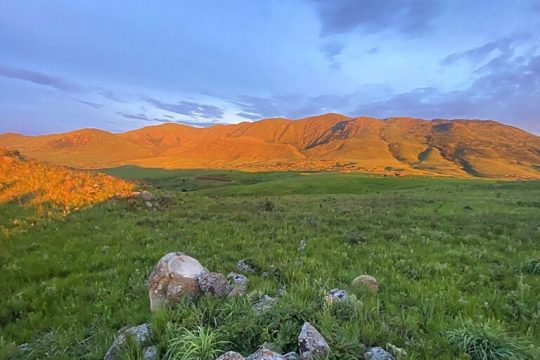
Mona Bunga, a project coordinator, instructs biodiversity monitor Teresa Sakata on how to use a turbidity tube to measure water quality in a stream flowing out of a restored patch of Afromontane forest.

Broad benefits of restored ecosystems
Habitat restoration work like this isn’t just good for the birds. There’s now a steady supply of freshwater to Kanjonde from the stream that flows out of the forest.
“By protecting the forest we are protecting the river so it can provide healthy water,” says Regina Wimbo, one of the 12 nursery workers who waters and tends to the seedlings and helps carry them across the hillside on planting days.
Wimbo was born and raised in Kanjonde. She says she’s happy to see her work in the nursery now bearing fruit.
“Six years ago we had lower water flow; now we have much more water flowing down,” she says, indicating the stream of crystal-clear water rushing past. There are plans to put in a small weir, and to pipe water directly to the village.
Some residents of Kanjonde are themselves learning how to gather data to measure rates of recovery and keep tabs on potential threats. Like the nursery workers, they’re employed on a part-time basis by the project and its sponsors, and have been trained to survey biodiversity and human environmental impacts at various sites around the village. Birds, plants, wood collection, gulley erosion, fires — they’re all surveyed.
11 notes
·
View notes
Text
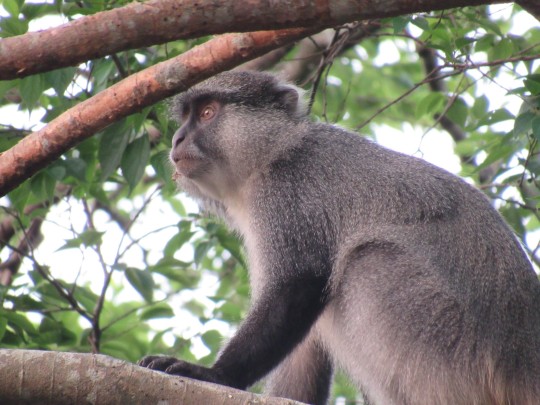
Samango monkey, seen in Hluhluwe-Umfolozi Reserve. Largely arboreal, these monkeys stay in forest, especially Afromontane forest of the eastern southern African coast. They will avoid forest patches less than 50 hectares in size, as they will be more vilnerable to attack by raptors. They will enter urban areas to forage for nuts, but only do so if so much indigenous forest has been destroyed that they have no other choice.
#south africa#africa#original photography on tumblr#wildlife photography#Hluhluwe-Umfolozi#samango monkey#monkey#primates
6 notes
·
View notes
Text
Table Mountains Beauty: Marvels, History, Trails, and Biodiversity

Table Mountain is one of the most famous landmarks in the world. Its flat-top summit and distinctive silhouette have made it a popular tourist destination for centuries.
But Table Mountain beauty is more than just a mountain. It is also a UNESCO World Heritage Site and a national park, home to a wide variety of plant and animal life.
In this blog post, we will take a closer look at Table Mountain. We will learn about its history, geology, and ecology. We will also explore some of the best ways to experience this amazing natural wonder.

Table Mountain Sunset. Photo by Nicolas Raymond. Flickr.
History of Table Mountain
The first people to live in the Table Mountain area were the Khoikhoi people. They called the mountain Hoerikwaggo, which means "mountain in the sea." The Dutch arrived in the area in the 17th century and gave the mountain the name Table Mountain.
The Dutch built a number of roads and trails up Table Mountain, making it a popular destination for hikers and climbers. In the 19th century, the first cable car was built, making it even easier to reach the summit.
Today, Table Mountain is a major tourist destination, attracting millions of visitors each year. It is also a popular spot for hiking, rock climbing, and paragliding.
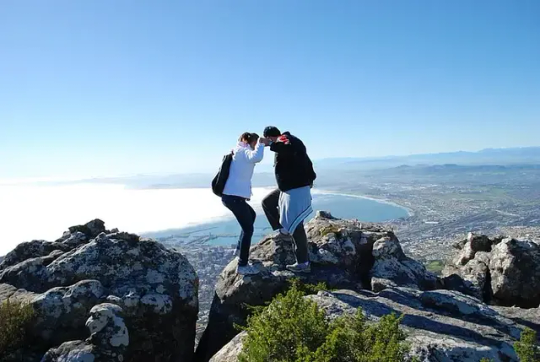
Table Mountain fun. Photo by George M. Groutas. Flickr.
Geology of Table Mountain
Table Mountain is a sandstone plateau that was formed over millions of years. The sandstone was deposited underwater, and then the top of the mountain was eroded away by glaciers during the Ice Age. This created the flat-top summit that we see today.
The sandstone on Table Mountain is home to a wide variety of plant life. There are over 1,500 species of plants on the mountain, including many that are endemic to the Cape Floral Kingdom. The Cape Floral Kingdom is a biodiversity hotspot, meaning that it is home to a high concentration of plant species.
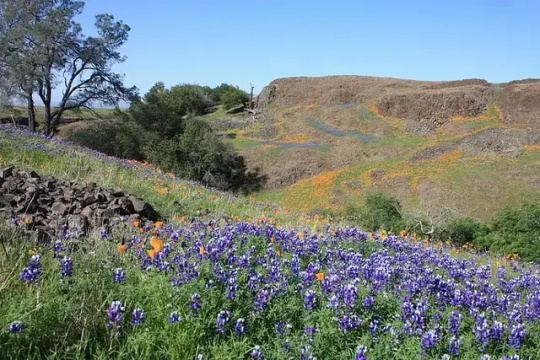
Wildflowers, Table Mountain. Photo by Ray Explores. Flickr.
Ecology of Table Mountain
Table Mountain is home to a wide variety of plant and animal life. The mountain's unique climate and geology have created a diverse ecosystem that supports a high concentration of species.
Plant life on Table Mountain segregates into two primary zones: the fynbos zone boasting low, shrubby vegetation and hosting numerous endemic species such as proteas, ericas, and restios, and the Afromontane zone with its taller trees and lush forests. This zone is home to a variety of trees, including yellowwood, stinkwood, and camphorwood.
The animal life on Table Mountain is also diverse. The mountain is home to a number of mammals, including baboons, monkeys, porcupines, and dassies. There are also a variety of birds on the mountain, including eagles, hawks, owls, and sunbirds. The mountain is also home to a number of reptiles, amphibians, and insects.
Table Mountain's ecology is fragile and is threatened by a number of factors, including invasive species, climate change, and pollution.
However, there are a number of organizations working to protect the mountain's ecology. These organizations are working to control invasive species, reduce pollution, and educate the public about the importance of protecting Table Mountain.
Here are some of the specific plant and animal species that can be found on Table Mountain:
- Plants: proteas, ericas, restios, yellowwood, stinkwood, camphorwood
- Mammals: baboons, monkeys, porcupines, dassies
- Birds: eagles, hawks, owls, sunbirds
- Reptiles: snakes, lizards, tortoises
- Amphibians: frogs
- Insects: butterflies, bees, ants
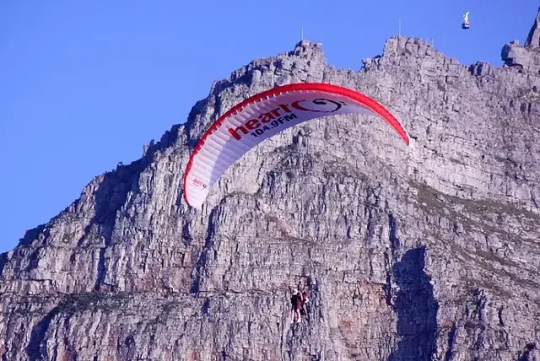
Tandem paragliding with the Table Mountain cable car in the background above. Photo by Derek Keats. Flickr.
How to Experience Table Mountain
There are many ways to experience Table Mountains' beauty. You can hike to the summit, take the cable car, or even paraglide off the top. If you are a hiker, there are a number of trails to choose from, ranging from easy to difficult.
The cable car is a great way to reach the summit if you are short on time or if you have mobility issues. Paragliding is a more adventurous way to experience Table Mountain, and it offers stunning views of the city and the surrounding area.
However, you choose to experience Table Mountain, its beauty and natural wonders are sure to amaze you.

Table Mountain Aerial Cable Car. Photo by George M. Groutas. Flickr.
Additional tips for visiting Table Mountains Beauty:
- The best time to visit Table Mountain is during the spring (September-November) or fall (March-May). The weather is mild during these seasons, and there are fewer crowds.
- If you are hiking to the summit, be sure to wear comfortable shoes and bring plenty of water. The trails can be steep and challenging, especially in the heat.
- If you are taking the cable car, be sure to purchase your tickets in advance. The cable car often becomes crowded, particularly during peak season.
- If you are planning to paraglide, be sure to book your flight in advance. There are a number of paragliding companies that operate in the area.
I hope you enjoyed this blog post about Table Mountains' beauty. If you are planning a trip to South Africa, be sure to add this amazing natural wonder to your itinerary.
Sources: THX News & Wikipedia.
Read the full article
#Biodiversityexploration#Cablecarascent#CapeFloralKingdom#Ecologicalwonders#Experiencesummitviews#Historyandtrails#Paraglidingadventure#Protectingnature'slegacy#TableMountain#TableMountainbeauty#VisitingSouthAfrica
0 notes
Text
Afro montane biome
Table of Contents
Introduction
Exploring the Unique Locations of the Afro Montane Biome
Characterised by Rich Flora and Fauna: A Look at the Afro Montane Biome
Exploring the Diverse Habitats of the Afro Montane Biome
Conclusion
“Explore the Unique Beauty of the Afro Montane Biome!”
Introduction
The Afromontane biome is a unique and diverse ecosystem found in the mountainous regions of Africa.…
View On WordPress
1 note
·
View note
Photo
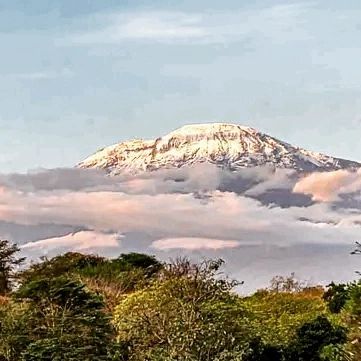
Its always look like these in November to December, full covered by snow but on January to February it will look completely different, it is the only largest self standing mountain on earth, it start with Afromontane forest on the first day of climbing, followed by Moreland, then semi arid dessert, alpain desert and on top the glacier is there, being on Kili some tourist said they completely feel like they are in space, I am just wondering when you will come to see these by yourself. #berg #basecamp #mtkili #kilimanjaro2023 #besttouroperator #summit #mtfuji #climbing #treking #photo #travel #2024 #2025 #mad #skee #berlin #german #mongolia #montenegro #bali #tokyo #helsink #nairobi #qattar #messi #ronaldo #golf #toronto #travelocity #safaribooking https://www.instagram.com/p/CmQV-sBNcrL/?igshid=NGJjMDIxMWI=
#berg#basecamp#mtkili#kilimanjaro2023#besttouroperator#summit#mtfuji#climbing#treking#photo#travel#2024#2025#mad#skee#berlin#german#mongolia#montenegro#bali#tokyo#helsink#nairobi#qattar#messi#ronaldo#golf#toronto#travelocity#safaribooking
0 notes
Text
Meet the 2 Nigerian scientists who won €25,000 from UNESCO for their climate-related projects

L-R; Oluwatosin Ogundolie, Iveren Abiem
Earlier this month, L’Oreal Foundation and United Nations Educational, Scientific and Cultural Organization (UNESCO) announced winners for the 2022 Sub-Saharan Africa Young Talents Awards for Women in Science.
According to UNESCO, the 20 scientists awarded are working in a wide range of research fields and are committed to improving the lives of millions of people across Africa.
The award monies will, among other things, help to secure and increase agricultural harvests to combat poverty and hunger, halt the spread of diseases, improve the management and conservation of vital natural resources, and ultimately enhance the safety of African countries amid natural disasters.
The Young Talents Awards aim to support women scientists in the pursuit of their careers. It will also promote and strengthen the role of women in science.
Two Nigerian winners: Out of the 20 winners, two are Nigerians. One of them is Iveren Abiem, a post-doctoral fellow and Life and Environmental Scientist. She was awarded for her work on ‘Carbon storage in the Afromontane Forest.
The second winner is Oluwatosin Ogundolie Akinwale, a PhD student in Formal Sciences. She was awarded for her work on ‘Flood prediction in Nigeria’.
Abiem will be given €15,000 while Ogundolie will be given €10,000, to enable them to carry out their research projects.
Nigeria needs climate innovation: In the 2021 UNESCO Science report, Nigeria was highlighted as an oil-dependent economy that should be diversifying its economy to improve revenues and tackle environmental challenges. The report also said that although Nigeria has devised various strategies to wean the economy off its over-reliance on crude oil, little success has emerged.
For the record: The UNESCO Science report said Nigeria is lagging in science and innovation. The report highlighted the fact that Nigeria’s federal government approved a National Science, Technology and Innovation Policy in 2012.
The policy stressed human capital development, intellectual property, technology transfer and the commercialization of research results, as well as the need for the federal government to commit at least 1% of GDP to a National Research and Innovation Fund.
However, to date, the National Research and Innovation Fund is yet to be activated.
0 notes
Text
CRS Uganda Jobs 2022 – Fresher Project Officer(Grants)

Job Title: Project Officer (Grants) – CRS Uganda Jobs 2022
Organization: Catholic Relief Services (CRS)
Duty Station: Kampala, Uganda
Catholic Relief Services (CRS) Profile
Catholic Relief Services (CRS) is an International non-profit organization whose commitment is to assist the poor and vulnerable overseas set out by the Bishops of the United States. Our Catholic identity is at the heart of our mission and operations. We welcome as a part of our staff and as partners people of all faiths and secular traditions who share our values and our commitment to serving those in need.
About Project:
The Global Evergreening Alliance (GEA), of which CRS is a member, has secured a 5 year, $ 160m investment for Restore Africa Program which covers 6 Eastern and Southern Africa Countries. In Uganda, the program will be implemented by CRS (as the lead implementing organization), CARE, World Vision, ICRAF, ECOTRUST and Uganda Landcare Network with a goal of restoring 560,000ha of degraded landscapes in the West Afromontane, Mt. Elgon and part of Karamoja. The program will pursue a small holder farmer led approach to restoration supporting profitable agroforestry systems that support profitability and productivity of farms.
Job Summary:
You will efficiently perform accounting services through documenting the Restore Africa financial transactions by compiling, analyzing, and verifying account information, preparing account entries, and delivering financial reporting services throughout the project life cycle.
Roles and Responsibilities:
- Provide feedback/input on grant management procedures to ensure they are designed so that subrecipients are able to manage their grants efficiently and transparently in compliance with donor financial regulations.
- Set and monitor sound accounting and financial reporting procedures for Restore Africa project subrecipients and partners following established standards. Ensure setup and maintenance of all data required for processing financial transactions for assigned project accounts in SunSystems financial accounting package.
- Co-ordinate the project’s grants accounting, reporting, compliance and risk management.
- Review sub recipients’ budget and, prepare agreements, modifications and conduct routine compliance reviews.
- Review and validate supporting documentation before processing of financial transactions to ensure all required documents are accurate and complete and authorizations are in place.
- Record financial transactions following appropriate authorizations. Review and analyze various accounts to detect irregularities. Advise on corrective actions and prepare correcting entries and adjustments, as necessary.
- Monitor subrecipient compliance with the grant rules and regulations and the requirements of their subrecipient agreements through monitoring visits, and other mechanisms applicable to subrecipient monitoring. Recommend actions necessary to resolve issues/concerns.
- Assess, evaluate and monitor subrecipient financial management processes in accordance with policy and strengthen capacity of partner in financial accounting and transactions.
- Monitor disbursement/receipt schedules, alert relevant project staff of due payments/liquidations, and maintain appropriate communication and follow-up to facilitate timeliness of financial resource management and compliance with set deadlines.
- Prepare various periodic and ad hoc financial reports and perform variance analysis to assist Restore Africa staff with decision-making. Assist with budget maintenance for proper management of financial resources.
- Works with finance team and program staff to ensure that key processes and systems are in place to manage grant risk assessments, donor financial compliance, and reporting management processes.
- Provide information to project staff, subrecipients, and partners on financial accounting policies and procedural compliance issues and deliver training and other capacity building activities to ensure full compliance with donor requirements. Periodic review of subrecipient internal controls and policies and provide advice on strengthening and best practices and transaction verification through monitoring reports and transaction analysis.
- Perform assigned treasury Restore Africa (cash payment/receipt, cash forecast, etc.) duties, as long as segregation of duties is ensured.
Minimum Qualifications:
- The ideal applicant must hold a Bachelor’s degree in Accounting, Finance, Economics, Business Administration with courses in accounting, or a qualification in accounting (CPA/ACCA or equivalent).
- At least two years’ experience in a position with similar responsibilities, preferably with an international or local NGO, or a financial/banking institution.
- Knowledge of the relevant public donor regulations preferred.
- Past experience in formulating and implementing finance policies and procedures that strengthen subrecipient internal controls.
- Proficient in MS Office packages (Excel, Word, PowerPoint, Visio), Web Conferencing Applications.
- Knowledge of SunSystems financial accounting package or similar financial reporting software preferred.
- Excellent analytical skills with ability to detect and report inconsistencies
- Conscientious, accurate and thorough with great attention to detail
- Ethical conduct in accordance with recognized professional and organizational codes of ethics
- Proactive, resourceful, solutions oriented and results-oriented
- Ability to work collaboratively
How To Apply for CRS Uganda Jobs 2022
All suitably qualified candidates should please follow these instructions exactly otherwise your application will NOT be considered:
- Email a cover letter and CV only to [email protected]
- Large files and/or scans of documents will lead to rejection of your application, in the subject line of the email, copy, paste – PROJECTOFFICERGRANTS only
- All applications that do not contain this exact subject line will be rejected and not read
Deadline: 12th July 2022 at 5:00 pm
For similar Jobs in Uganda today and great Uganda jobs, please remember to subscribe using the form below:
NOTE:
No employer should ask you for money in return for advancement in the recruitment process or for being offered a position. Please contact Fresher Jobs Uganda if it ever happens with any of the jobs that we advertise.
Facebook
WhatsApp
Twitter
LinkedIn
Read the full article
0 notes
Photo

A tree-lined #tbt... #trees #forest #naturesvalley #plettitsafeeling #gardenroute #TravelChatSA #southafrica #R102 #bloukranspass #road #roadtrip #afromontane (at Nature's Valley, South Africa) https://www.instagram.com/p/CIWJGScgnV3/?igshid=1ly8acs6ojqru
#tbt#trees#forest#naturesvalley#plettitsafeeling#gardenroute#travelchatsa#southafrica#r102#bloukranspass#road#roadtrip#afromontane
0 notes
Photo

The views were immensely wide. Everything that you saw made for greatness and freedom, and unequalled nobility" . - Karen Blixen . . Expedition: #BeyondLockdown Timeline: Day 13 Distance: 5 372km Province: Mpumalanga Region: Hoedspruit Destination: #mariepskop . . Today, we stood atop Mariepskop, named for the Pedi Chief, Maripi, and as in Karen Blixen's 'Out of Africa', we felt the energy of this remarkable continent seep deep into our bones. And once again, we could only marvel at the rich diversity of our intoxicating country. . . This raw and uncharted collection of gritty peaks, eroded ridges and looming sandstone walls slab up from the #Lowveldt plains, and is technically part of the northern #Drakensberg. This - and the hide-away village of #Phiring - was our 7th provincial stopover on this year's #BeyondLockdown #Expedition with Isuzu South Africa and it is a section of South Africa that I recall vaguely from family road trips to #KrugerNP many a decade ago. . . Mariepskop itself is terra incognito for all of us, though. A rutted track winds from Lowveldt plains via first scraggly plantations and then dense, primary #afromontane forest, before you boom onto the unexpectedly vast #fynbos summit. The protea, restios and heather seem completely out of place, and you could as well be lost in the Groot Winterhoek wilderness. We were joined by ecologists from Kruger to Canyons Biosphere Region and Conservation South Africa . . There are many stories to tell, with our visit to #Phiring community tourism project a real highlight. The hike into a wild Kloof with the enthusiastic young From the Region for the Region eco-monitors rate as unforgettable. but we will share all of this in due course. Right now, we are back in the #isuzuMUX cruising the tarmac curves to the east in anticipation of ocean time at iSimangaliso Wetland Park in #KZN 🌴🍃🌊 . . This 9000km #BeyondLockdown journey was made possible by @isuzusa with support from @dunloptyres 🙏 . . #ISUZU #WITHYOUFORTHELONGRUN #DUNLOPTYRES #FRONTRUNNERZA #SPOTAFRICA #POLARSA #BALEIAWINES #coremerino #BEYONDEXPEDITIONS #KZN #OZONEAFRICA #ANDBREATHE (at Kokkariba Guest House) https://www.instagram.com/p/CD9lW4gpnuU/?igshid=1tpps2bewm0tk
#beyondlockdown#mariepskop#lowveldt#drakensberg#phiring#expedition#krugernp#afromontane#fynbos#isuzumux#kzn#isuzu#withyouforthelongrun#dunloptyres#frontrunnerza#spotafrica#polarsa#baleiawines#coremerino#beyondexpeditions#ozoneafrica#andbreathe
0 notes
Photo
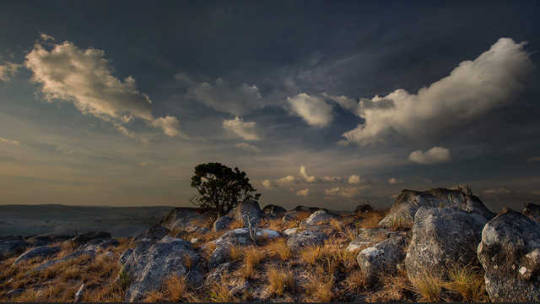
Northern Region, Malawi
by Jacky Kobelt from Switzerland
Source | Google Maps
#Chitipa#Wanderlust#Travel#Destinations#Northern Region#Photography#Malawi#Nature#Jacky Kobelt#Chelinda#Africa#Afromontanes Grassland#Nyiaka Plateeau#Nganda Peak
35 notes
·
View notes
Photo

Nyiaka Plateau First sunrays on top of the Nganda Peak ( 2607 m ) in the Nyiaka Plateau, Malawi
5 notes
·
View notes
Text
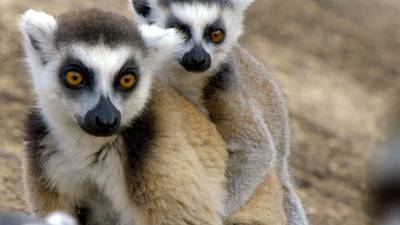
Land of Primates - Smithsonian Channel
Nature Film Review
The Smithsonian Channel is an inexplicably underrated source of nature documentaries, brilliantly balancing the educational with the cinematic. The BBC will always be the final word, but Smithsonian is a fantastic place to stream films to fulfill your need for nature.
The series on African primates is particularly fascinating, focusing on relatively unsung species. Found across the continent in nearly every habitat save the most extreme desert, primates exhibit a winning design. The Geladas of the Ethiopian highlands grazing on high altitude grasses to the Poison monkeys of Zanzibar show off the ability of primates to succeed in virtually any habitat. The series spends an episode on the Ring tailed lemurs of Anja mountain in Madagascar, befitting a charismatic species that shows a talent for adaptation.
‘Lemurs of Madagascar’ covers the various other lemur and primate species, as the isolation of that great island has allowed a truly remarkable evolutionary branch to flourish. Of its species, 80% are endemic, found nowhere else on Earth. The massive island is bisected by a spine of mountains that run vertically down the island, acting as a rain shield holding wet weather in the east with forest conditions. The mountain itself is a haven for ring tailed lemurs, as seen in the first episode. The west of the island holds some of the most hostile arid conditions on the planet. Life has taken up this challenge, with even the impossibly dry ‘spiny forest’ still frequented by Verreau’s Sifaka. Leaping from one Alluaudia tree to another, biologists still cannot explain how they avoid impaling themselves on the lethal thorns that cover the trees.
Even Ring-tailed Lemurs find resources to exploit in an otherworldly habitat of titanic grey edifices resembling alien skyscrapers, the only remains of an ancient ocean reef. The razor sharp stone is negotiated by the lemur troops, navigated by experienced scouts down to the base where sheltered groves collect water from the rocks above, rare places to hunt for food. The aye-aye is examined, with its bizarre adaptations bringing it success in hunting the wood for insects. Its strange appearance has been a curse, as humans mistake it for a demon, and kill it on sight. Fat-tailed lemurs occupying the rain forests of the east are the only primate and tropical mammal that hibernates; a process called aestivation, sleeping for seven months to conserve resources during lean times. Lastly, the episode looks in on the Indri of the forest, haunting the trees with its plaintive call. The endless wonder of Madagascar is captured with incredible images that easily achieve a visual poetry while the narrator covers the fun facts.
‘Wanderers of the Forest’ focuses on the Amathole mountains of south eastern South Africa, an Afromontane habitat that has been nearly destroyed by timber and farming interests. Covering less than 0.5% of South Africa’s surface area, it is the last bastion of the towering 200 foot high Yellowwood trees. This is the ‘national tree’, which is still cut down regularly despite its protected status and very slow reproduction.
These forests are the home and prison of Samango monkeys and South Africa’s only parrot species, the Cape Parrot. Though there are small pockets of the forest left, the devastation requires each species to forage in urban areas for food. Samango monkeys, adorned with greyed fur that makes them resemble old men, cross telephone wires into town to raid gardens and ruin their teeth on acorns for protein. The residents shoot them on sight in the town of Hogsback, an unfortunate reminder of humans’ refusal to understand their place in the natural world. The parrots raid the pecan fields, relishing the fatty pecans which provide nourishment, but cause high fat levels in the liver. Farmers have set aside a field just for the parrots while shooting them in their own fields. Both species would live far better on a diet of yellowwood fruit, filled with antioxidants and vitamins. ‘Wanderers of the Forest’ makes a strong case for conservation of species by conserving the habitat, while highlighting the bizarre behaviors of our own species.
‘Baboons of Bambelela’ is an engaging chapter focusing on the Chacma baboons of the Waterberg, making their living amid the granite inselbergs of this paradise. Baboons tend to have complex troop structures, led by a strong alpha male (for Chacmas), allied adult males, and the various females and offspring, living in 2-3 dozen large groups for predation defense. The higher the risk of predation, as in the Okavango, the larger the troop. This chapter examines a troop created by a rogue male who enticed low ranking females away from their troop where reproductive prospects were poor. The recruitment can consist of not just being an available alpha male, but also grooming, which plays an outsized role in bonding, forming alliances, and political intrigue. The alpha then takes and holds prime feeding territory and maintains tight discipline to keep the troop intact. Males hold rank with muscle, fighting off rivals, protecting family members, and keeping everyone well fed - when he fails in this, he is deposed and forgotten. Females hold rank by bloodline, and keep that rank even if their mate is lost. Their offspring holds rank in a similar fashion, this is carried over as they age, and is reflected in being groomed by subordinates. The grooming is crucial for currying favor, enabling individuals to rise in estimation and importance. It even allows interlopers to join a troop. The notion of animals conducting politics by various means has always been fascinating to me, a literal ‘scratch your back’ quid pro quo that could yield a dividend.
‘Baboon Lagoon’ follows a single Chacma baboon troop living in the reserve of De Hoop. As a misty morning breaks, we see the hulking alpha male lead his troop from their rock haven to the feeding grounds where they pick berries from a Dune Myrtle tree, stuffing their cheek pouches with the bounty. There is little new material in this one, but it is a favorite for showcasing the natural beauty of De Hoop, a small but crucial nature reserve along the South African Garden Route. Home to some of the world’s rarest mammals, De Hoop was created in 1957 south of the Overberg mountains specifically to protect Bontebok antelope. These beautiful creatures with striking white facial coloration were nearly exterminated, down to just seventeen individuals by farmers who shot them as pests. They were joined by Cape Mountain Zebra, also critically endangered, to breed freely and eventually restock reserves. Above all what is conserved here is the Cape Floral Kingdom, home to the Fynbos biome. Forming a packed heath, proteas, ericas, restios and geophytes are packed into a relatively tiny area that has biological diversity greater than any rainforest. Baboons are able to graze here due to their dietary flexibility, adapting to any food source. Fynbos manage to grow on very poor soils, and are thus low in nutrients. The baboons must work harder to make a living than those in more productive areas, but are successful nonetheless.
'Africa’s baboons' is a larger scope review of the five species of baboons found across that massive continent, including the Chacmas, the Olive baboons of western and central Africa, the Geladas, Hamadryas, and Yellow baboons of eastern Africa. Baboons are well built to exploit the remarkable diversity of ecosystems, and unsurprisingly are found nearly everywhere. Chacmas are able to live off the sparse nutrients of the Fynbos kingdom, though will raid human habitation when necessary to survive. Olive baboons are widespread across west-central Africa, capable of eating nearly anything, and are led by an alpha female in large troops. This female carries knowledge of water and food sources that leads back many generations, passed on to offspring to carry on the traditions.
Emotions run deep in these societies, and higher ranking members hold the discipline. In one scene, an alpha attacks a mother who turns her back on a helpless newborn, a valuable lesson in a dangerous world. This unrest causes cortisol levels to surge in the bloodstream, which can disrupt reproductive hormones - and these subside quickly in the calm of grooming sessions, restoring the balance, reinforcing emotional bonds, and aiding troop cohesion. Baboons have been noted by researchers to recognize relationships of dominance within the troop independent of their own position - capable of exercising politics and abstract thought.
The camera follows one rogue male who drifts into the territory of a baboon troop - he is alone, cast out of his old troop once sexually mature. Ever seeking a way into an existing troop, or coaxing away females, he is constantly on the lookout for an opportunity. Social animals face a bleak existence in solitude. One does not need to anthropomorphize to see loneliness in his eyes, unable to bond with others. Ticks build up on his face and back, he feeds fretfully as there is no one to look out for predators, sleep is rare, and stress wears on him without the close interactions baboons desire. Hope appears with another rogue male who carefully approaches, and through body language an alliance is made. Troops are formed this way in the natural world, and the social animal is given another chance.
World of Primates is a stellar series that stands with the best, both as entertainment and education. I find this invigorating as a way of understanding how so many disparate pieces of our planet fit together into a loose whole. Learning how these systems work is the same as learning why they matter - and in a world on the verge of large scale collapse, they all matter.
1 note
·
View note
Photo
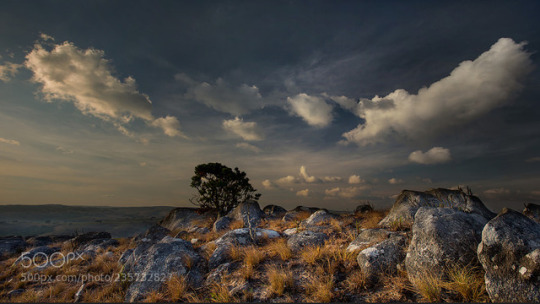
Nyiaka Plateau by jackykobelt
2 notes
·
View notes
Photo

Nyiaka Plateau by jackykobelt
1 note
·
View note
Photo

Nyiaka Plateau by jackykobelt
1 note
·
View note